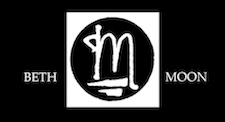A Noble Process in a Digital Age
With platinum printing, noted for its beautiful luminosity and wide tonal scale, the absence of a binder layer allows very fine crystals of platinum to be embedded into the paper giving it a 3-dimensional appearance. Unrivaled by any other printing process, platinum, like gold, is a stable metal. A print can last for thousands of years. This process gives tones that range from cool blacks, neutral grays, to rich sepia browns. Paper choice is key. I use Arches Platine, a 100% cotton, watercolor paper with natural deckle edges, that has been made by the same mill in France since 1492. Contact printing means you need a negative the size of the image. Printing methods from the 19th century teamed with technology from the 21st make the best of both worlds. Once a negative is scanned into a computer it can then be enlarged and output as a high resolution negative printed on transparency material. The paper is first humidified in a humidifying chamber. This is a covered box with a suspended plastic grate that the paper lies on, above a bath of water. A sensitized solution of platinum and palladium metals are then hand brushed onto the humidified paper and left to dry in a light free box. It is then put into a vacuum frame which keeps the paper and negative tightly pressed together and exposed under a UV light source. Developer is then poured over the paper as the image appears. The print then goes through 3 successive clearing baths and a final archival clearing wash. It is then left on a glass plate to dry.
In a market that places a high premium on archival work, the struggle increases to balance art, commerce, and technique. Crossing the line from machine made to handmade does necessitate a commitment, and true, the work is labor intensive, but the finished results ensure a satisfaction that comes with the freedom to define many decisions while working with materials that allow you to be true to your vision. And in the end, what unfolds before your eyes is more of an ‘art-object’ than an ordinary photograph.

